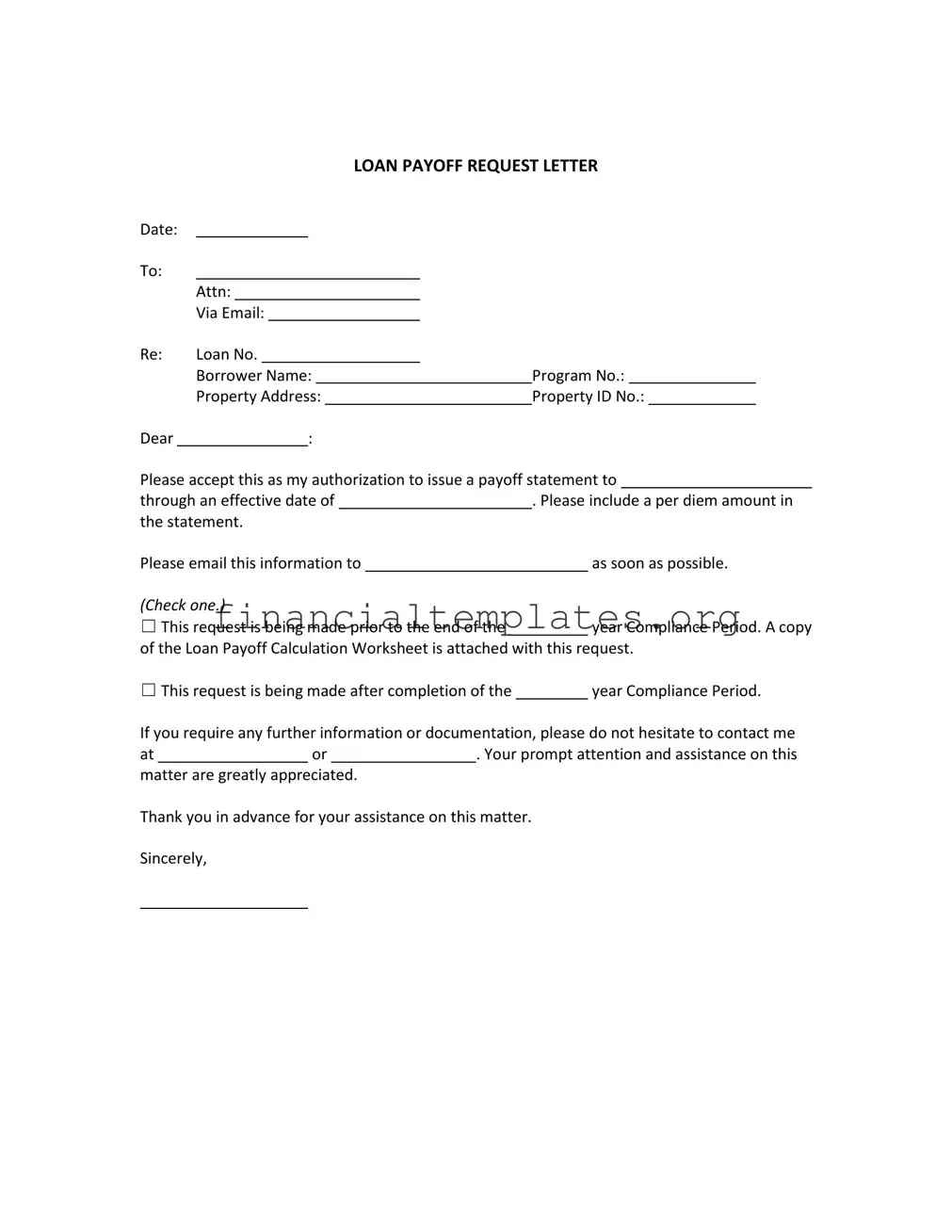A Mortgage Statement Request is notably similar to a Loan Payoff Letter Request in that both forms serve as formal requests for specific financial information concerning real estate transactions. While a Loan Payoff Letter Request focuses on obtaining the exact payoff amount necessary to clear the loan balance, a Mortgage Statement Request seeks a statement detailing the remaining mortgage balance, including interest and any other charges. This similarity underscores their shared goal of providing clarity and transparency regarding the financial status of property-related loans.
A Loan Modification Request Letter shares a foundational objective with the Loan Payoff Letter Request, as both involve formal communication with a lending institution regarding adjustments to the terms of a loan. The Loan Modification Request Letter specifically requests changes to the loan's payment structure, interest rate, or other terms to avoid foreclosure or to make payments more manageable. Like the Loan Payoff Letter, it requires detailed borrower information and a clear statement of the request, reflecting the significant overlap in their procedural approach.
A Debt Settlement Proposal Letter and a Loan Payoff Letter Request are aligned in their purpose of addressing and resolving outstanding financial obligations. The Debt Settlement Proposal Letter outlines a consumer’s offer to a creditor to settle a debt for less than the amount owed, often when the borrower is facing financial hardship. It closely mirrors the payoff request by engaging with financial institutions to negotiate terms that diverge from the original loan agreement, aiming to reach a financially sustainable resolution for the borrower.
Refinance Application Forms bear a resemblance to Loan Payoff Letter Requests in terms of their role in the process of renegotiating loan terms. Where a Loan Payoff Letter seeks the total outstanding amount for the purpose of clearing a loan, a Refinance Application is the first step towards securing a new loan with different terms, often to take advantage of lower interest rates or to consolidate debt. Both documents necessitate detailed financial information and signal a borrower's initiative to modify their loan commitments.
An Early Mortgage Payoff Calculator Input Form mirrors the Loan Payoff Letter Request by providing individuals with crucial information on finalizing their mortgage. While the Loan Payoff Letter formally requests the payoff amount from a lender, the Early Mortgage Payoff Calculator aids borrowers in understanding how additional payments may affect the timeline and total interest paid on their mortgage. This document shares the intent to expedite the path to loan satisfaction, although it serves more as a planning tool rather than an official request to a financial institution.
A Release of Mortgage Form is fundamentally connected to the Loan Payoff Letter Request as it serves as the culminating document in the loan payoff process. After the loan balance is settled as per the payoff letter's details, the Release of Mortgage Form is issued by the lender to officially denote that the borrower is relieved from their mortgage obligations, thus signifying the full repayment of the loan. Both documents play pivotal roles in the transition towards complete ownership of property without the encumbrance of a loan.
Automatic Payment Cancellation Letters are akin to Loan Payoff Letter Requests because they both involve initiating a change regarding how a borrower meets their loan obligations. Specifically, an Automatic Payment Cancellation Letter is used to stop pre-arranged monthly deductions from a borrower’s bank account for loan repayments. It shares a commonality with the Loan Payoff Request in that it alters the ongoing payment process, often as a precursor to the loan being fully paid or refinanced elsewhere.

